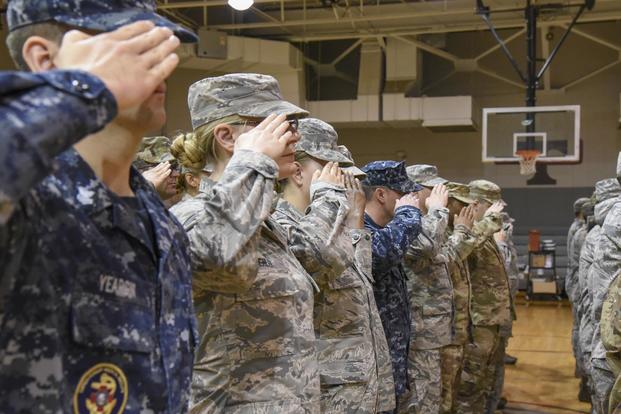The number of U.S. military personnel being reviewed under the Pentagon's new deploy-or-out policy is likely to change in coming weeks as each of the services determines who's eligible for retention, the head of the Defense Department's personnel management said Tuesday. The policy, announced by Defense Secretary Jim Mattis in February, officially took effect Oct. 1.
"This retention determination is clearly made on a case-by-case, individual basis," said Patricia Mulcahy, director of officer and enlisted personnel management, during a phone call with reporters.
Pentagon officials would not disclose how many troops are affected in each service "for operational security reasons."
"The member can and will be retained if it is in the best interest of the service," Mulcahy said. "This is a service responsibility. The bottom line for this new policy is to emphasize and shine a light on the importance of our members maintaining a deployable status, and for services and the commanders to figure out how best to get service members back to their units as quick as possible."
Related content:
- Air Force Still Determining How Many Face Separation Under New Policy
- Sailors Who Can't Deploy Will Face Administrative Separation
- Deploy or 'Find Something Else to Do' in Civilian Life: Mattis
She said the policy is "not designed to push people out."
While the policy only went into effect this week, the services have continuously provided updates to the Office of the Secretary of Defense on who remains deployable.
As of Aug. 31, approximately 126,000 active-duty, National Guard and Reserve component personnel were considered non-deployable, said OSD spokeswoman Jessica Maxwell. While that excludes trainees, it accounts for roughly six percent of the total force, taking into consideration temporary and permanent non-deployable service members, she said.
"The reasons vary, but they are predominantly medical," Maxwell said in a statement, adding that roughly 66,000 of those service members are temporarily non-deployable due to illness or injury.
Under the policy, known as DoD Instruction 1332.45 "Retention Determinations For Non-deployable Service Members," troops are considered temporarily non-deployable if they:
- are a patient expected to recover;
- have a medical condition that limits their full duty;
- are pregnant or postpartum;
- are a prisoner or have pending legal actions against them;
- are absent without leave or are on an unauthorized absence;
- are without a family care plan;
- are in the process of adopting a child;
- are not yet 18 years of age;
- are assigned to a location to provide support to a family member;
- are non-deployable per their respective service's discretion;
- have a pending administrative separation;
- are considered unsatisfactory participants or have administrative action pending (Reserve component only).
Exemptions will be given to those who are pregnant or postpartum, Mulcahy said.
Troops are considered permanently non-deployable if they:
- have a medical condition that permanently prevents deployment;
- are enrolled in the Disability Evaluation System;
- have a permanent profile and are awaiting a line-of-duty determination (Reserve component);
- are unable to carry a firearm;
- are the sole survivor or surviving family member;
- are deferred from hostile fire zones;
- are granted restriction of military duties in accordance with DoDI 1300.06 or "Conscientious Objection";
- are an ex-prisoner of war.
Special considerations are given to those who've been wounded in combat, Mulcahy said.
"Any service member who is unable to deploy for 12 consecutive months for a medical reason will be referred to the Disability Evaluation System in accordance with current policy," she added.
Parts of this policy are a "just a re-emphasis" of DoD policies that service members already must comply with, Mulcahy said.
"All service members are expected to be deployable, and that's so that we are ready to fight today and ready to fight in the future," she added.
She explained that service members who are non-deployable for more than 12 months will require a retention determination, to be made by their commander. The service secretaries have the authority to retain troops who are not deployable for more than a year, she said.
"The period that the member can be retained for is limited, but it can be renewed," she said.
Mulcahy said the Pentagon is hopeful that each of the services will get creative to keep its soldiers, sailors, airmen and Marines combat-ready.
There are tailored programs in the Air Force, for example, that use a "sports-medicine approach," employing coaches to create unique exercises and muscle development training so an airman won't develop a detrimental medical condition later on.
"The vast majority do come back to us," Mulcahy said.
-- Oriana Pawlyk can be reached at oriana.pawlyk@military.com. Follow her on Twitter at @Oriana0214.













